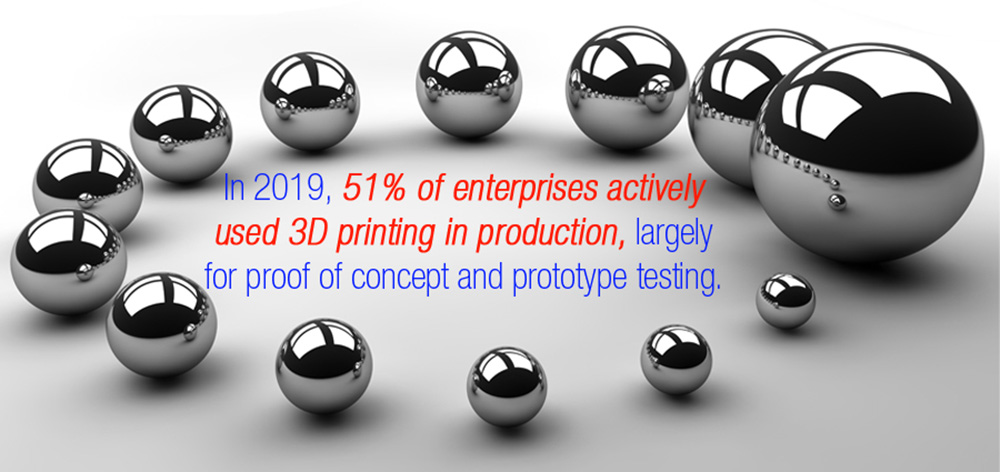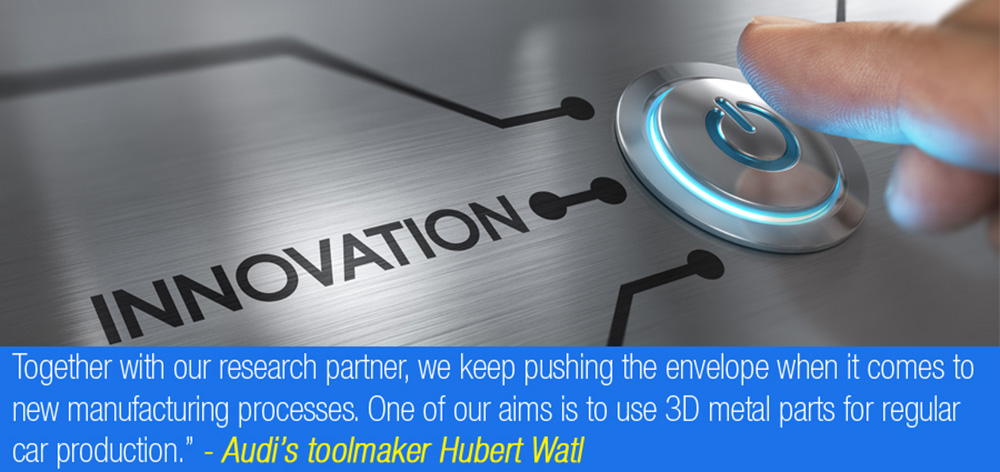We find ourselves on the cusp of another industrial revolution. 3D printing has reached a tipping point, and it’s about to become mainstream in a big way. While many engineers and hobbyists have used this innovative manufacturing technology in their daily work, much of the general public is still unaware of this powerful new tool. However, this is about to change as 3D printing continues to become more accessible.
At its core, 3D printing is a process that allows for the creation of solid objects from digital files. Also known as additive manufacturing, this technique is unique from other manufacturing techniques. Traditionally, manufacturing has relied on subtractive techniques, which require huge machines that cost tens of thousands of dollars.
On the other hand, 3D printing can be accomplished on desktop-friendly machines. Using affordable materials like plastics, these printers can create everything from novelty figurines to hard-to-find automotive parts. Believe it or not, NASA even uses a 3D printer on the International Space Station to print custom tools!
Affordability, accessibility, and a shallow learning curve combine to drive the impact of 3D printing on businesses, workforces, and societies.
Impact on Businesses
In 2019, 51% of enterprises actively used 3D printing in production, largely for proof of concept and prototype testing. When over half of businesses adopt a technology, it’s no longer a fad. Instead, it’s the future, and additive manufacturing is poised to transform the way organizations around the world approach manufacturing, supply chains, and beyond.

Some of the key impacts that 3D printing will have on businesses include:
- Rapid Prototyping: 3D printing allows for small batches of parts to be created in only a few hours. This has given rise to the art of rapid prototyping, which enables businesses to test a new concept or idea in days instead of weeks. Popular toymaker Hasbro leverages this approach when designing new products, which allows them to get to market faster than their competitors.
- Lower Manufacturing Costs: Transitioning early-stage manufacturing processes from traditional methods to 3D printing leads to lower manufacturing costs. In most cases, it’s much cheaper to create prototypes, jigs, tooling, and fixtures using additive manufacturing. However, processes like injection molding are still more affordable at scale, so shifting all manufacturing to 3D printing is not yet practical.

- Fewer Supply Chain Woes: 3D printing files can be viewed as the storage of spare parts in the cloud. It’s the perfect solution for low volume parts that are only needed on occasion. Parts can be designed in Europe or Asia and then manufactured in North America over the course of a single day, which completely redefines the supply chain. When leveraged effectively, additive manufacturing can eliminate the cost and time of shipping for certain components.
As we have seen, the future of 3D printing will offer key benefits to countless businesses. Similarly, the widespread adoption of additive manufacturing is sure to positively impact workforces around the world.
Impact on Workforces
It’s no secret that the workforce for industries like manufacturing has been in flux for the past few decades. The rise of globalization has driven an increasing number of jobs to wherever the cheapest labor can be found. This trend, combined with a steady rise in automation, has made well-paid manufacturing jobs more difficult to find.

However, there’s good news to be had. 3D printing is poised to positively impact workforces in several ways, including:
- New Job Growth: While job growth in traditional manufacturing sectors is floundering, additive manufacturing is driving job growth in key areas. From 3D computer-aided design (CAD) to equipment technicians, there are an exciting number of new job openings driven by this innovation. Better yet, initiatives are in the works to retrain displaced blue-collar manufacturing workers for white-collar jobs in 3D printing.
- Freelance Manufacturing: The widespread availability of affordable 3D printers is leading to the creation of freelance manufacturing opportunities. For example, websites like Shapeways allow anyone to open their own 3D print shop online. This presents a fantastic opportunity for entrepreneurial individuals who want to pursue modern manufacturing opportunities.
- Educational Opportunities: While today’s workforce is working to adapt to a world with 3D printing, future generations will benefit from more educational opportunities. Additive manufacturing is already becoming a key component of high school, with a number of post-secondary offerings also under development. Look for the next generation of workforce professionals to be well-versed in additive manufacturing fundamentals.
This is a truly exciting time for workforce professionals interested in additive manufacturing. Nevertheless, one could argue that the greatest impacts of 3D printing will be on society as a whole.
Impact on Societies
Amazon and other digital retailers have driven the rise of throw-away culture. After all, why should you spend the time to repair something if a replacement is just a few clicks away? While this is a reasonable argument, it’s impossible to maintain in a world grappling with the early effects of climate change.
Thankfully, the growing popularity of 3D printing is revitalizing the practicality of repair, which could have massive impacts on our world:
- Maker Culture: Consumer-grade 3D printers are a direct result of maker culture, a movement using modern technology to redefine DIY repairs. The maker movement encourages individuals to leverage additive manufacturing to make the most out of what they already have, which is key to sustainability. From household repairs to unique designs, there are 3D printing ideas for everyone.
- A New Generation of Innovators: In the 1980s, the growth of computers led to a generation of innovators. In many ways, the development of 3D printing is mirroring this trend. Dozens of innovators and business leaders are already leading the way with this new technology.
3D printing is already having a profound impact on businesses, workforces, and societies. Believe it or not, this is just the beginning of an exciting trend. As 3D printers continue to improve and become more affordable, look for innovation to become the new normal in the world of additive manufacturing.
Dr. Gaddam is a seasoned entrepreneur, angel investor, and author. Dr. Gaddam’ s greatest accomplishment lies in raising ERP Analysts, Inc. from a two-person organization to eighty-five-million-dollar firm. ERP Analysts, Inc. has been recognized as one of the fastest-growing companies by Inc. 5000 for ten years, Deloitte Fast 500, & Business First Fast 50 for several years. ERP Analysts is recognized as a “Best Places to Work” in Ohio for several years (www.erpagroup.com). Dr. Gaddam graduated the Doctor of Management (DM) from Case Western Reserve University, MBA from the Ohio State University, and the Owner President Management program (OPM 43) from Harvard Business School. He is the author of the book “Destination Success: Discovering the Entrepreneurial Journey” and also co-author of “Roadmap to Success,” with Deepak Chopra, Ken Blanchard, and other entrepreneurial leaders.





